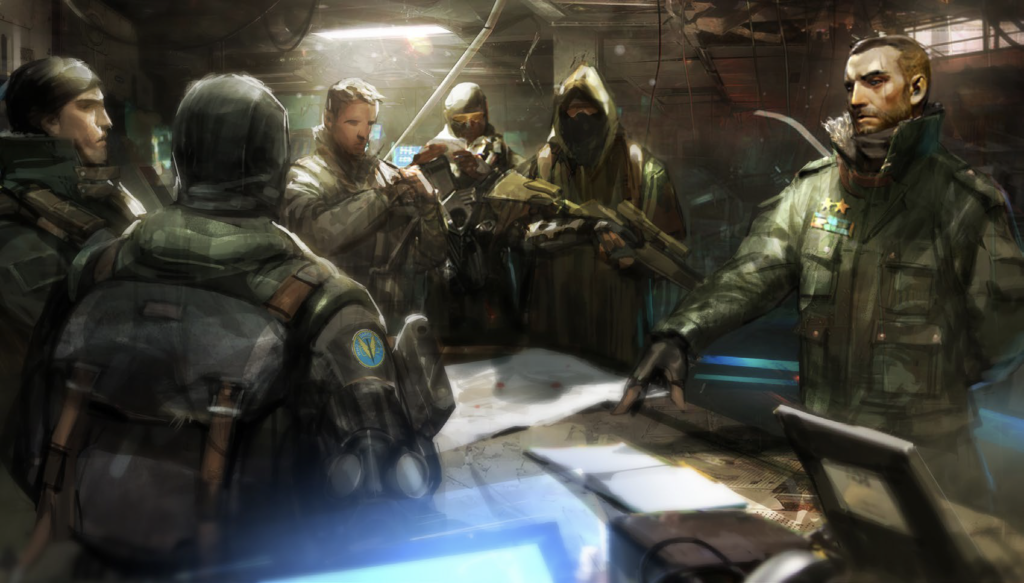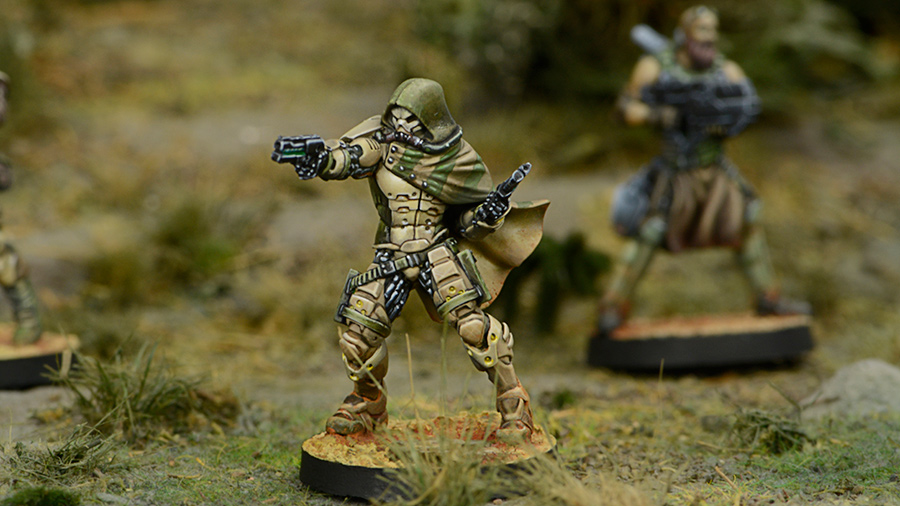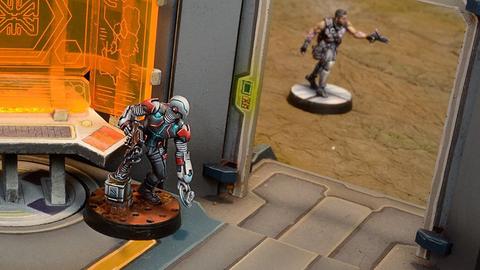Infinity Academy – Intro
Introduction
Hello and welcome to Infinity Academy!

Infinity Academy is designed to be a one-stop-shop for Infinity teaching materials.
Our articles are primarily aimed at new or intermediate players who are looking to either learn the game from scratch, or to extend their knowledge. If your question is, “how do I play Infinity?”, we hope that you’ll find comprehensive answers here. Similarly, if your question is, “how do I get better at Infinity?”, then we hope that there’s enough information in these pages to help.
Now a quick note about what is not covered here.
These resources are not intended to replace the core rules.
The articles here are supplemental pieces of information, to be read alongside the core rules. The basics of moving, shooting, and rolling dice are covered in great detail on the Infinity Wiki and in the rule-book – so we won’t be repeating that here. What we will be providing here are extra pieces of information that provide more detail to the core rules, and can help to build greater understanding of the game.
This collection of articles does not focus on specific faction or unit tactics. For example, you will not find in-depth guides about Yu Jing, or longer pieces of writing exploring how to use heavy infantry. The topics covered here tend to be far more broad and focus on generic game concepts, rather than specific pieces of unit or faction advice.
How Do I Start Playing Infinity?
Infinity can seem to be an overwhelming game to get into. It has a wealth of varied factions, hundreds of units, and an extensive range of rules. As a new player it can be difficult to know how to begin!
Thankfully, the question of how to start has been answered on multiple occasions by various authors (including us here at Infinity Academy!). Therefore, to avoid repeating existing material, we feel it would be more productive to link to external sources. The below are two guides aimed at absolute beginner’s who want to learn more about what Infinity is, and how to begin playing:
Essential Resources
So you’ve decided you want to play the game and perhaps even picked a faction. That’s great! The next question is often, “well, what do I need to know to start playing games?”. The aim of this article is to provide you with the basic materials you need to play games of Infinity.
It’s best to bookmark these, so that you can come back to them later. Throughout the Infinity Academy series we’re going to refer to these resources again and again, so it’s important to be able to find them quickly.
- Infinity Army – This is a free tool which allows you to view unit profiles and build lists.
- Infinity Wiki – This is a free website which details all the rules, pieces of equipment, and special skills in the game.
- Infinity Website – The official game website.
- Infinity N4 Rules – The core rules for the game. The game’s current edition is called N4.
- Code One Rules – The rules for code one. Code One is a more streamlined version of N4.
Why are there two rulesets? What’s the difference between the core game (N4) and code one?
Code one is a stripped down version of the full game that’s designed to ease new players into the experience. At their heart both N4 and code one are exactly the same game. However code one has a smaller unit selection and fewer special rules, in order to avoid overwhelming people.
Is it recommended that newer players start with code one?
The answer to this really comes down to personal preference.
Code One has a lot of advantages for newer players over N4, due to its streamlined nature. If you’re brand new to wargames then starting with code one could be a good idea. It’s an easier game to pick up.

On the other hand, code one has a limited unit and faction selection, and you might find this off-putting. If you really want to play Haqqislam, for example, you would be disappointed to find that they’re not in code one (yet!). You could always pretend your Haqqislam models are another faction, just for the purposes of learning code one. However it’s understandable to be put off by this idea. This might make you lean towards diving into N4 first, and skipping code one. Furthermore, most of code one’s streamlining comes from fewer skills or pieces of equipment on the troops, but it’s easy to replicate this yourself in the full game (N4), by just picking units that have fewer skills and pieces of equipment.
As you can see there are pros and cons to both approaches. Code one is simpler and easier, but much more limited. N4 has a huge range of factions and abilities, but can be quite dense with rules.
Our recommendation here at Infinity Academy is that if your faction is represented in code one and you’re new to the game then it’s probably a good idea to start there. If your faction is not represented in code one then your options are to either pretend your models are from a faction that’s present in code one whilst you learn the game (before heading over to N4), or, alternatively, to just start with N4. However, once you’re familiar with the basic rules you can quickly make the transition to N4 and move on.
New Player Roadmap
First Steps into Infinity
So you’ve read a basic guide to Infinity, picked a faction, bookmarked the essential resources, and downloaded the rules. Those are some great first steps, but where you do actually start with the game? What’s the best first step?

Our recommendation would be to read the guides labelled ‘Basic’ here, and make sure you understand the core rules in the rulebook.
As an absolute minimum pages 5 to 13 in the N4 rules set out the basic game concepts. Reading that first is a very important step because it introduces the most essential aspects of the game. If you don’t have much time and want a quick idea about how an Infinity game works – start there. If you haven’t read those pages yet, we would recommend doing that first. If you’re still interested after doing that then you can start thinking about moving on.
Once you’ve done that, you’ll need to expand on your basic knowledge, so that you understand the movement and shooting rules in a bit more depth. Pages 15 to 59 in the N4 rules cover this. I know this seems like a solid chunk of reading, but if you’ve read the basic rules from pages 5 to 13 then you’ll already have a good understanding about how most of this stuff works. The purpose of pages 15 to 59 is to elaborate on the basic information about moving and shooting so that you have a more complete understanding of how everything works. The book also features multiple diagrams, so it’s not just pages and pages of text.
Now would be a good time to go read those pages. Once you’ve done that, come back to these articles and start with the information in the ‘Basic’ section. The purpose of those articles are to build on the concepts featured in the rules in more detail – so you have a better understanding of how the game actually works.
Roadmap For The Future
Our hope is that once you’ve read pages 5 to 59 in the rules, and all of the articles marked ‘Basic’, you should feel confident building lists, reading profiles for weapons and units, and playing basic games. You might not know what every rule does, but you’ll know where to look to find more information. A player who has completed this section will know how to play Infinity, but won’t necessarily know all the skills and weapons off by heart.

The next step is the ‘Intermediate’ series. These articles are focused on helping a new player start to become comfortable with more in-depth aspects of the game, such as picking the right weapon for a specific job, or learning how to use camouflage more proficiently.
The final step is the ‘Advanced’ series. These articles are aimed at players that have a good working knowledge of how the game functions, but they want to learn more about very specific aspects of play such as building a specialised list, forcing poor ARO choices onto opponents, or spotting ways out of losing situations in highly competitive games.

